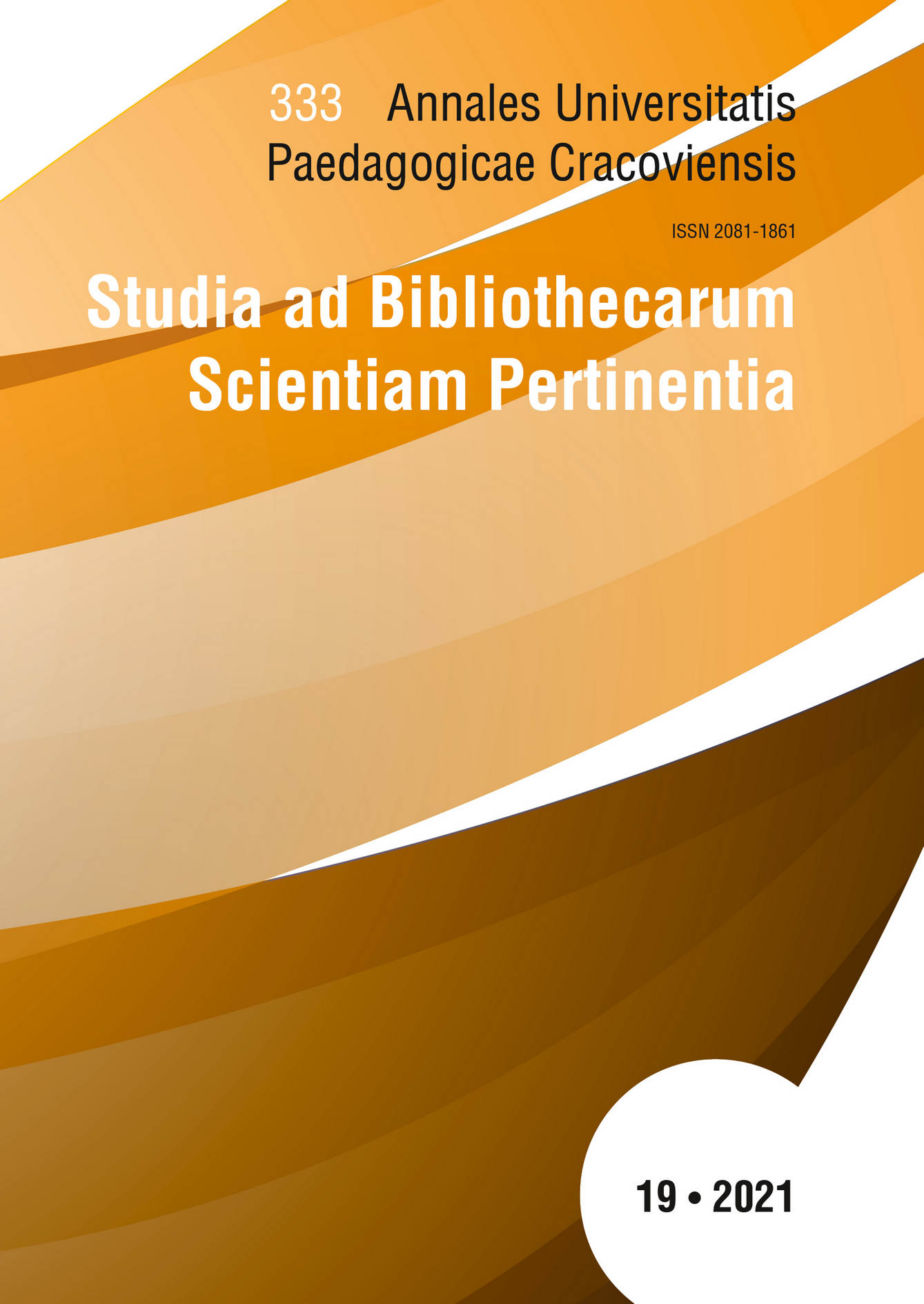Traces of the Second World War in Children’s Magazines During the Polish Peoples' Republic (1945–1989)
DOI:
https://doi.org/10.24917/20811861.19.20Keywords:
magazines for children, memory, Polish Peoples’ Republic, the Second World War, Miś, ŚwierszczykAbstract
For a very long time in Poland, themes that allude to the Second World War were not covered in children’s magazines. This was largely due to the perception of the vulnerability of young readers as well as the trauma of the older generation. It was not until the late 50's, in the 20th century, that the periodicals started to discuss the said themes. This study intends to determine the representation of WWII and the impact of such representation in two children’s periodicals, Miś [Little Bear, publ. 1957-1989] and Świerszczyk [Little Cricket, publ. 1945-1989]. Both periodicals present the events of the Second World War in an enigmatic and oblique way; and they favoured literary genres such as poetry and short prose rather than popular science forms. Importantly, Nazi concentration camps, ghettos, civilian casualties in families and among the closest ones, evacuations, relocations, among other subjects were taboo subjects. The said issues (just as the subject of death in general) only began to appear in Polish literature for children after the year 2000. However, in recent times, children’s magazines have been concerned with other more commercial issues and the said themes have been avoided.References
Freud A., Burlingham D. T., War and Children, Whitefish (Mont.) 2011.
Heska-Kwaśniewicz K., Nadolna-Tłuczykont M., Książka harcerska. Od zapomnienia do przypomnienia, [w:] Literatura dla dzieci i młodzieży, t. 4, red. K. Heska-Kwaśniewicz, K. Tałuć, Katowice 2014, s. 56–73.
Heska-Kwaśniewicz K., Wojna Dorosłych – historie Dzieci. Narracje o wojnie w literaturze dla młodych odbiorców po transformacji ustrojowej (1990–2015), [w:] Literatura dla dzieci i młodzieży, t. 5, red. K. Tałuć, Katowice 2017, s. 33–56.
Honeck M., Marten J. A., War and Childhood in the Era of the Two World Wars, Cambridge 2019.
Kotaba K., Czy wojna jest dla dzieci? O obrazach wojny w literaturze dla najmłodszych, „Annales Universitatis Paedagogicae Cracoviensis. Studia Historicolitteraria” 2015, t. 15, s. 184–192.
Michułka D., Gregorowicz Ł., Czytanie pamięci i emocji. Narracje literackie dla młodego czytelnika – teoria i praktyka odbioru („Rutka" Joanny Fabickiej, Agora 2016), [w:] Polonistyka i świat wartości. Edukacja polonistyczna jako wartość, red. M. Marzec
Jóźwicka, A. Karczewska, S. J. Żurek, przy współpr. M. Nowak, Lublin 2019, s. 449–466.
(Od)pamiętywanie. Gry z przeszłością w literaturze dla dzieci i młodzieży, red. B. Niesporek-Szamburska, M. Wójcik-Dudek, Katowice 2018.
Olszewska B., O wojnie w „Płomyczku” (1946–1989), [w:] Wrzesień w literaturze polskiej, red. M. Inglot, Wrocław 1989, s. 83–104.
Podskarbi W., Mamo, tato, co to jest wojna? Czyli jak tłumaczyć wojnę dzieciom, czytając książki. Mom, Dad, What War Is? How to Explain War to Children by Reading Books, „Przegląd Biblioterapeutyczny” 2015, t. 5, nr 2, s. 135–151.
Rogoż M., Czasopisma dla dzieci i młodzieży Instytutu Wydawniczego „Nasza Księgarnia” w latach 1945–1989. Studium historycznoprasowe, Kraków 2009.
Wądolny-Tatar K., Dziecko i wojna w perspektywie postpamięci. Narracje dla najmłodszych, „Litteraria Copernicana” 2017, nr 3 (23), s. 111–124.
Whitehead W., Old Lies Revisited: Young Readers and the Literature of War and Violence, London 1991.
Wójcik-Dudek M., W(y)czytać Zagładę. Praktyki postpamięci w polskiej literaturze XXI wieku dla dzieci i młodzieży, Katowice 2016.
Downloads
Published
How to Cite
Issue
Section
License
Copyright (c) 2021 AUPC Studia ad Bibliothecarum Scientiam Pertinentia

This work is licensed under a Creative Commons Attribution 4.0 International License.

